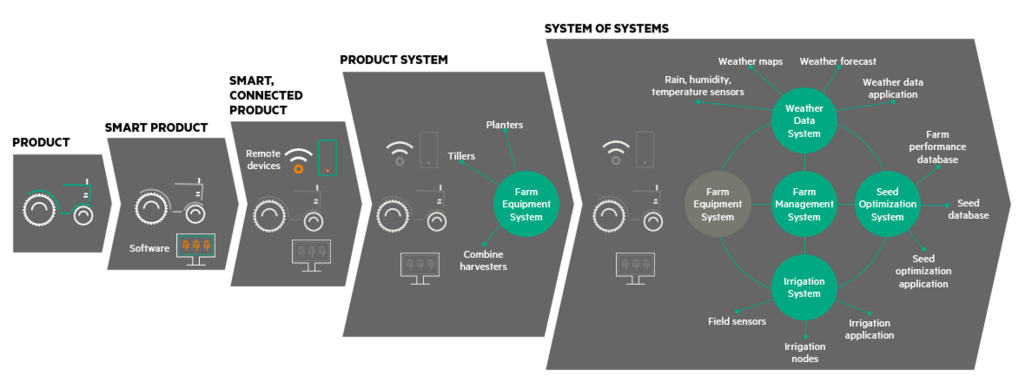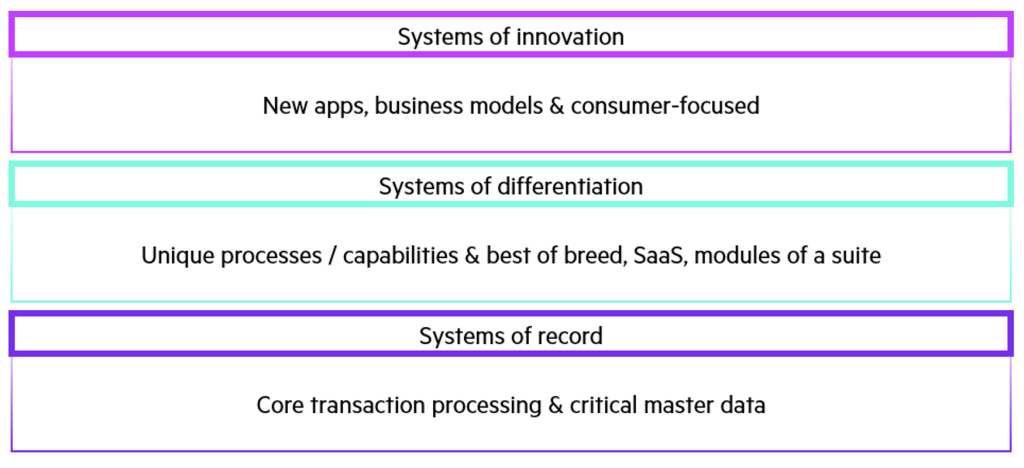- “문화 우선 접근이 성공의 비결” 에이버리 데니슨의 AI 혁신 전략
- “여러 AI 모델을 로컬에서 테스트 가능”···구글, 오픈소스 앱 ‘AI 엣지 갤러리’ 공개
- Why I recommend this OnePlus phone over the S25 Ultra - especially at this new low price
- I replaced my laptop with Microsoft's 12-inch Surface Pro for weeks - here's my buying advice now
- This palm recognition smart lock doubles as a video doorbell (and has no monthly fees)
Think in Systems to Propel Your Transformation

Lately glazing up in a clear night sky and identifying different star constellations (in these days with the support of a mobile app – of course!) I got unswervingly reminded that everything is related to and interconnected with each other. Stars, together with planets and asteroids, form the solar system we live in, which constitutes to the galaxy, which in turn presents a part of the universe as we know it today.
Although some still perceive it straightforward – the business world is dynamic, interconnected, ambiguous, and unpredictable. Such an interconnected constellation accounts for the broad range of endeavours from strategy development, buying decisions, digital innovations, and transformation realization to system modernization itself.
To see the dynamics between different components, “systems thinking” can help. Once your organization thinks in systems, it can better understand root challenges, implications from one component to another, and even innovate more with effective disruption to gain new revenues, reduce costs, or mitigate risks more effectively.
The definition of system thinking
What is system thinking? First, let me outline the context of what a system is before illustrating how your organization can propel the transformation towards a digital- and sustainable-first enterprise with system thinking. A system is a set or structure of things, activities, ideas, and information that interrelate and interact with each other. Systems consequently alter other systems, because every part itself forms a (sub) system consisting of further parts. Even businesses and humans themselves are systems! That being laid as foundation, let’s move beyond academia and make this more pragmatic:
Look at the transformation as a system and simplify
Digital transformation and sustainable transformation, or any other considerable change in an organization as response to evolving market and customer needs, presents a system: There is continuous effort of diverse stakeholders with initiatives, activities, investments, and ideas that leverage digital concepts and technologies to achieve desired outcomes, such as increased operational efficiency or faster innovation with new digital products.
In this structure, different stakeholders and teams are driving distinct agendas as part of their contribution to the gearing within the overall transformation engine, which can span from experience to intelligence to platform agendas, and others. Commonly, these agendas target distinct objectives such as productivity, agility, or efficiency, and they are related to and within each other.
Following the acknowledgment of this reasoning, simplification is imperative to make these interrelations and activities visible and to be able to articulate and communicate the complex system presenting the organization’s current journey. A model like the HPE Digital Journey Map offers a simplified representation of the digital transformation system intended to promote understanding of the real system and to seek answers to specific questions about the system.
HPE
Embed system thinking in your ambition & strategy
In an era in which computing and connectivity are ubiquitous, servitization increasingly becomes relevant as guiding principle keeping the transformation journey on path. Capabilities of more and more smart, connected, and service-enriched products evolve significantly, , towards the end of 2022 the forecast is around 29 billion devices, and their traditional industry boundaries blur and shift.
A famous example given by the renowned economist Michael Porter depicts a tractor company that evolves from smart, connected tractors into farm equipment offerings and eventually into farm management systems. Spotted the keyword? The evolution occurs seemingly naturally, from discrete products and their intelligent enhancements into so-called product systems. In the tractor example closely related products and adjacent services are integrated. Eventually, multiple of these product systems can be combined together and triangulated with further external data, e.g. soil or weather data, into powerful systems of systems: entire farm management systems.

HPE
Hence, ingraining system thinking into your organization’s ambition and consequently into the transformation strategy will boost your organization into a leading position to redefine market boundaries and drive disproportionately positive value for your customers, ecosystem, and certainly your own business. Embedding systems theory at the core of your game plan undoubtedly influences environmental factors, competitive advantages through differentiation, and co-creation and -production components. Beyond new offerings, this also accounts for purchase decisions – rather than done in vacuum, buying decisions take place related and dependent on other (business) needs.
Recognize different systems in modernizing effectively
From understanding the phenomena of transformations to the strategic perspective of an organization’s ambition and its plan of action, let’s cascade further into the actual application of digital technologies and IT modernization. Indeed, as a CIO or CTO who is principally responsible for the platform’s agenda, a core driver focuses on modernizing the IT landscape, including platforms and applications for increased agility and optimized costs in responding to the business. In particular, the organization’s use of the applications will expose different paces and requirements for the various options of modernizing, including re-platforming, re-hosting, re-engineering, and other modernization outcomes.

HPE
The varying rates of change, adoption, and implications on governance, operations, and data within application landscapes can be distinguished between systems of record, systems of differentiation, and systems of innovation (this notion is coined as PACE-layered application strategy by Gartner) according to their primary purpose. These different layers reflect the characteristics of the different software modules related to their use and data lifecycle from new business models (innovation) to best of breed (differentiation) to core transaction processing (record), recognizing the interrelations with their users, the information flows, or funding aspects. Retaining further depth of this part for a different article, the essential to take from here is that this approach can allow to navigate data-first modernization more effectively incorporating the concept of systems.
Leveraging deep technological and methodical expertise as well as the HPE Digital Journey Map, Digital Advisors from HPE can help you exploring the system of transformations in the digital era with new value propositions, leading use cases and successful modernization patterns to propel your efforts and activities next. Reach out to an advisor like me on digitaladvisors@hpe.com to start our conversation today.
___________________________________
About Ian Jagger


